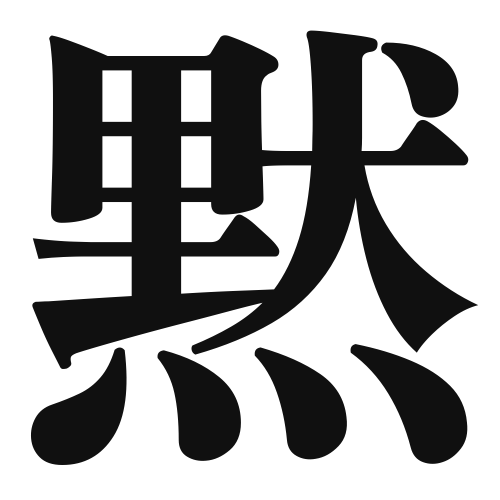1. Overview of Meaning
The kanji “黙” (moku) means “silence” or “to be silent.” It conveys the idea of refraining from speaking or remaining quiet in various contexts.
2. Formation and Radical
Formation of the Kanji: The kanji “黙” is a phonetic-ideographic character (形声文字). It combines the radical for “black” (黒) and a phonetic component that suggests the sound “moku.” This combination reflects the idea of silence being associated with darkness or absence of sound.
Radical: The radical of “黙” is 黒 (kuro), which means “black.” This radical often relates to concepts of darkness or quietness.
3. Examples of Usage
Common Words and Phrases:
- 黙る (damaru) – to be silent
- 黙認 (mokunin) – tacit approval
Example Sentences in Daily Conversation:
- 彼は黙っていることが多いです。 (Kare wa damatte iru koto ga ooi desu.) – He is often silent.
- 会議中は黙って聞いてください。 (Kaigi-chuu wa damatte kiite kudasai.) – Please remain silent and listen during the meeting.
4. Synonyms and Antonyms
Similar Kanji:
- 静 (sei) – meaning “quiet” or “calm,” but it emphasizes a peaceful state rather than just silence.
Antonyms:
- 喋る (shaberu) – meaning “to talk” or “to speak,” which is the opposite of being silent.
5. Cultural and Historical Background
Relation to Japanese Culture: In Japanese culture, silence is often valued in communication, reflecting respect and thoughtfulness. The concept of “黙” is significant in various social contexts, such as during ceremonies or in meditation.
Proverbs and Idioms:
- 黙っているのが一番 (damatte iru no ga ichiban) – “Silence is best,” indicating that sometimes it is better to remain silent than to speak.
